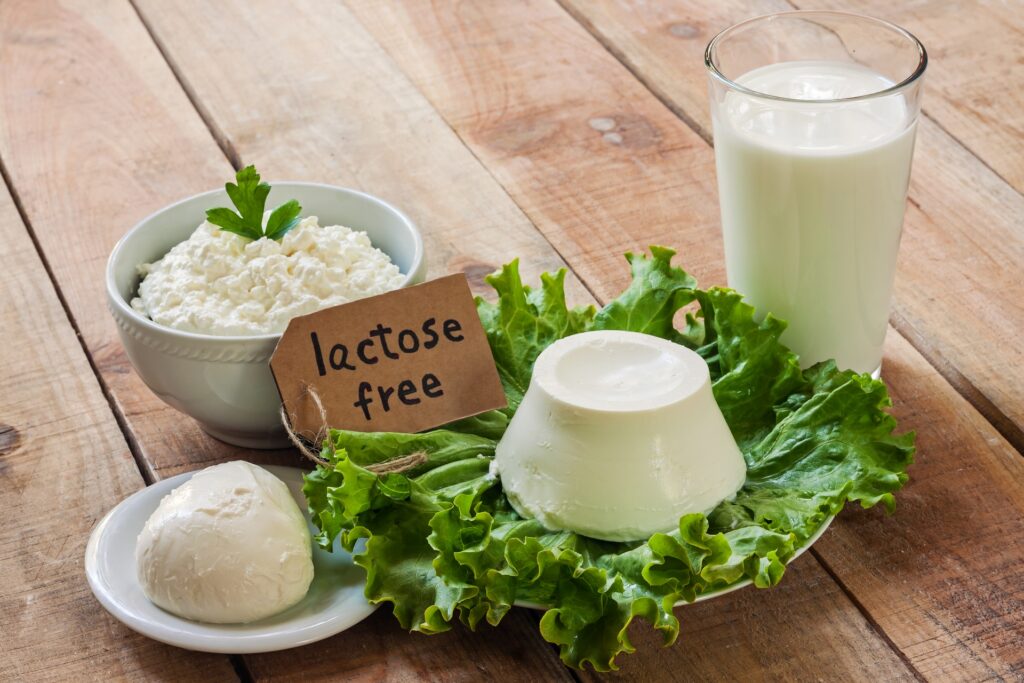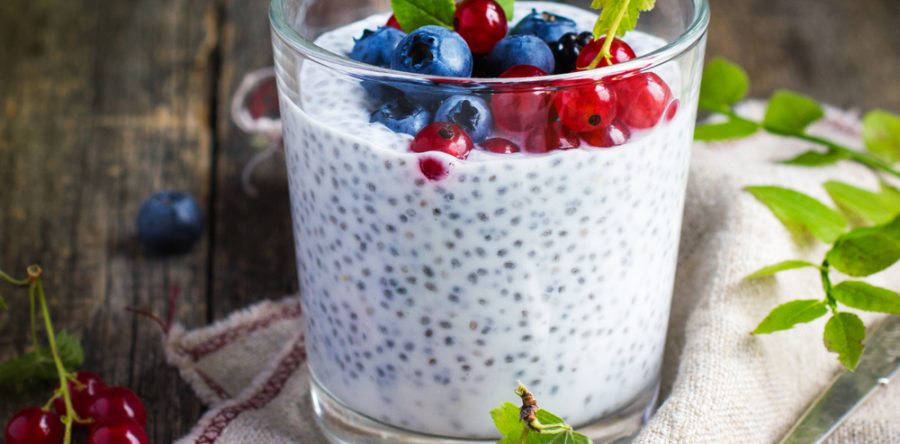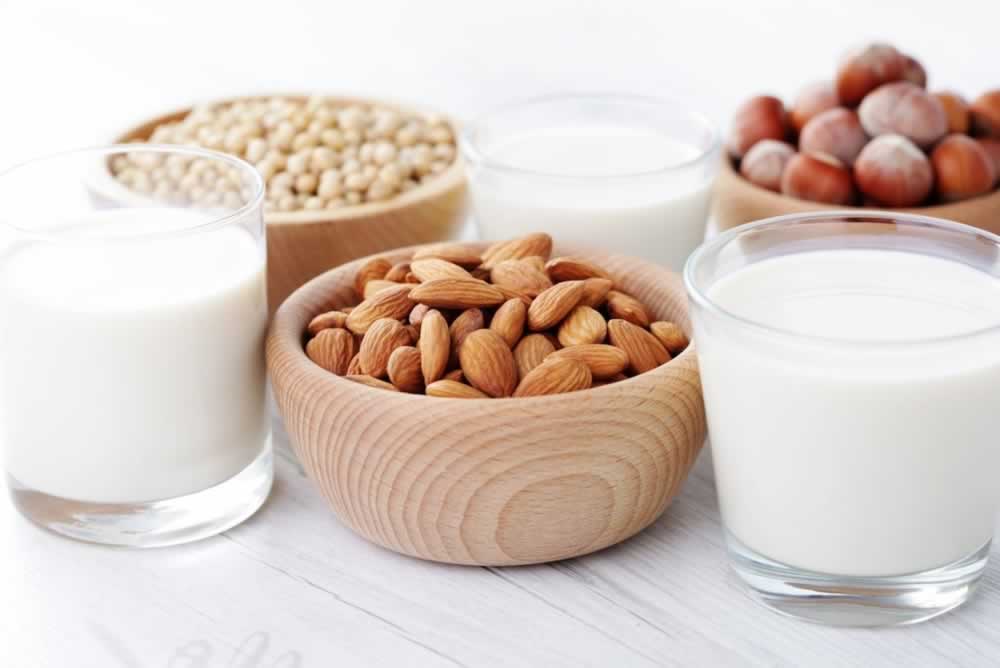The National Health Nutrition Program recommends that adults consume 2 dairy products per day. As for children, adolescents and the elderly, they should consume 3 or even 4 dairy products a day. But are dairy products really as healthy?
I plunged into scientific studies to conduct my investigation. I would like to share with you what I have discovered through a comprehensive critique of dairy products.
Here is what you will discover:
- Basic information on dairy products
- Why some people are intolerant to dairy products
- What are the benefits of dairy products
- What are the disorders or diseases associated with dairy products
- What to replace dairy products
Basic information on dairy products
The terms “daily products” or “dairy products” refer to products made from milk.
Dairy products are found in most homes in the western world.
When you open the refrigerator of the average American, it is often to find milk , yogurt , cottage cheese and cheese .
Milk is also found in the following foods:
- Butter
- Flavored milk
- Yogurts
- Buttermilk
- Kefir
- Chocolate milk
- Coffee drinks
- Iced coffee
- Condensed milk
- Milk powder
- Milkshakes
- Whipped cream
- The porridge
- Sour cream
- The fresh cream
- The raw cream
- Ice cream
- The cottage cheese
- The flan
- The foam
- Bavarian
- The pudding
- Various desserts
- Some types of cookies
- Some types of bread
- Some types of cakes
- Some sauces
- Milk chocolate and some types of candy
- Some cereals for breakfast
- Some types of prepared soups
- Some types of meat and sausages
- Some types of chips
- Whey protein / whey
Since when do we consume dairy products?
The man only began to drink milk at the advent of agriculture and animal husbandry. It’s been around 10,000 years ago.
Why some people are intolerant to dairy products
With the advent of agriculture and livestock, our diet has changed drastically. We started consuming milk, cereals, salt, and probably increasing our consumption of mammalian meat.
Before the advent of agriculture and animal husbandry, our diet was that of hunter-gatherers. Have you ever heard of the paleo diet ? This diet is based on hunter-gatherer feeding.
It is generally accepted that milk is good for bones. However, research suggests that hunter-gatherers (who did not drink milk) had stronger bones than ours.
Cow’s milk is not intended for human consumption at all. Its role is to ensure calves grow rapidly.
At birth, a calf weighs 40 kg; 2 years later, it is fully developed and weighs 600 kg. No doubt, therefore, milk is very nourishing.
Thanks to milk, humans have survived difficult times. He provided us with the proteins, fats, sugars, vitamins and minerals we needed at times when there was little or no food.
We sometimes hear that it is unnatural to drink milk because humans are the only mammals to drink milk from another mammal. In my opinion, this is a somewhat odd argument, because a buffalo will never be milked by a lion, for example. And how would a lion tread a buffalo, anyway? Sitting on a stool, with a bucket?
From the point of view of evolution, we do not need dairy products for our health. We have lived millions of years without cow’s milk. But, in itself, this does not mean that milk is bad for human beings.
We are also the only mammal that cooks and cooks food. And look where it took us! In summary, as mammals, we exhibit more than one deviant behavior. That’s not why they are good or bad for your health.
Genetically speaking, on the other hand, the human being is not made to digest milk.
Studies show that in areas where milk has been used for thousands of years, we have genetically adapted to dairy products. This mainly concerns the inhabitants of Northern Europe.
Drinking milk may seem like the most normal thing in the world. The fact is, most of the world’s population does not tolerate milk. 75% of the world’s population is lactose intolerant .

Lactose
lactoseLactose is a carbohydrate found in milk. These milk sugars are composed of two simple sugars: glucose and galactose.
The body of newborns manufactures lactase , an enzyme whose role is to dissociate lactose from breast milk.
Most people in northern Europe continue to produce lactase all their lives and therefore tolerate dairy products well.
Lactose intolerance
For most of the world’s population, however, the ability to produce lactase disappears as one approaches adulthood. The lactose can not be dissociated any more and one becomes lactose intolerant.
It is estimated that 0% to 15% of the population of Northern Europe is lactose intolerant. While in large parts of Africa, South America and Asia, this figure reaches 80%!
Lactose intolerance leads to digestive problems. This can result in troubles such as:
- Diarrhea
- Abdominal cramps
- flatulence
- bloating
- nausea
- Pain in the lower abdomen
- vomiting
- Constipation
Diarrhea is caused by lactose, which, undigested , is found in the small intestine. This causes a call for water in the digestive tract.
In the large intestine, intestinal bacteria ferment lactose, which causes the formation of gas. This causes bloating and can cause abdominal pain and flatulence .
The symptomatology varies from one person to another and depends on the amount of lactose that is tolerated and the amount that has been consumed.
If you have lactose intolerance, it is best not to consume dairy products, or at least avoid them as much as possible.

Fermented milk products
Many lactose intolerant people can tolerate small amounts of lactose, in the form of fermented dairy products such as yogurt , cheese , butter and kefir.
Kefir is derived from the fermentation of milk using “kefir grains”. The bacterial cultures present in kefir and yoghurt feed on lactose.
This is why yogurt, and especially kefir, contains much less lactose than regular milk.
As a result, kefir and yogurt are often well tolerated by people who have lactose intolerance.
Some lactose intolerant people experience fewer problems when they drink raw milk and / or from cows in the open air and free to graze.
The freedom to move and graze has an effect on the composition of milk that cows give.
Cow’s milk allergy
We must distinguish lactose intolerance and allergy to cow’s milk. In case of milk allergy, it is not lactose that is involved, but a protein specific to cow’s milk.
Allergy to milk affects mainly babies and can disappear with age.
Some people, however, remain allergic to cow’s milk during their childhood and adulthood.
The only solution is to no longer eat foods that contain cow’s milk.
The benefits of dairy products
If you do not have lactose intolerance or milk allergy, dairy products may have some benefits.
I would like to point out, however, that dairy products have a number of negative effects on human health, and I therefore do not advocate their systematic consumption . I do not agree that dairy products contribute to optimal health .
To learn about the negative effects of dairy products, see “Disorders or Diseases Associated with Dairy Products”.
Benefit # 1: Whole dairy products help fight overweight
Studies show that people who consume whole milk products (such as whole milk) are less likely to be obese than people who consume skim milk products.
In another study, it appeared that people who consumed the most dairy products suffered less often from excess abdominal fat, had lower triglyceride levels, and had better sensitivity to insulin.
It may seem odd that people who consume the most fat are precisely those who suffer the least from overweight.
However, high-fat diets such as the low-carbohydrate diet and the ketogenic diet are indeed more effective than low-fat diets for weight loss.
Benefit # 2: Reduced Risk of Type 2 Diabetes
The studies mentioned in the explanation of benefit # 1 show that the consumption of whole dairy products reduces the risk of type 2 diabetes .
It should be noted, however, that other studies found no correlation between whole milk consumption and reduced risk of type 2 diabetes.
The evidence is therefore not conclusive concerning this possible benefit of dairy products.
Benefit # 3: Dairy products are very nutritious
The milk is nourishing. It contains 3 g protein per 100 g, which contains 18 of the 22 amino acids.
Milk is also rich in calcium, vitamins A, B1, B2, B6, B12, D, potassium, zinc, magnesium and phosphorus.
In addition, the milk contains fatty acids. These fats are often removed to produce skim milk, which is then marketed or used as a base for the production of light dairy products.
This may save calories, but at the expense of many benefits. It is precisely in the milk fat that its beneficial nutrients are found.
If you drink milk, it is always better to choose whole milk rather than skim milk.
More fat and more caloric, whole milk also provides greater satiety.
It is a mistake to think that whole dairy products make you fat and that dairy products are lighter, no. In fact, the opposite is true because whole dairy products are more satiating.
The fat present in milk consists of about 400 types of fatty acids, most of which are saturated fatty acids.
cows fed on grassMilk from grazing cows provides omega-3s and is richer in fat-soluble vitamins such as vitamins K1 and K2.
Important for the metabolism of calcium, vitamin K2 is also good for the heart and bones.
Skim milk products do not contain or little vitamin K!

Benefit 4: Whole milk reduces the risk of heart attack
One might think that whole milk, because of its saturated fatty acid content, increases the risk of cardiovascular disease.
We grew up with the idea that saturated fatty acids increase cholesterol and therefore the risk of cardiovascular disease.
In recent years, however, there has been no scientifically proven link between saturated fat intake and the risk of heart attack.
Keys studyThe belief that saturated fats increase the risk of cardiovascular disease is due to the Keys study , conducted in the 1960s.
Keys’ study suffers from a selection bias: only countries that confirmed that saturated fats increase the risk of cardiovascular disease were included in the findings.
If you want to know more about this, read my article on how to lower cholesterol.
The way cows are kept determines to a large extent the composition of the milk.
A pasture cow, free to move and grass fed, provides a much richer omega-3 and ALC milk . These are important for fighting inflammation and help prevent cardiovascular disease.
Studies show that in countries where cows are fed on grass , the consumption of whole milk products reduces the risk of cardiovascular disease and heart attack.
A meta-analysis of 10 studies showed that whole milk reduces the risk of heart attack and stroke. The risk of cardiovascular disease, however, was not significantly lower.
In fact, another study, in which only women participated, revealed an increased risk of cardiovascular disease related to the consumption of whole dairy products.
In Australia, where cows are mainly grass fed and move freely, the risk of cardiovascular disease is much lower in people who consume whole milk products.
Benefit # 5: Decreased blood pressure
Milk from grass-fed cows is healthier at different levels. Dairy products from cows fed on the grass prove to have a hypotensive effect.
Disorders or diseases associated with dairy products
Let’s start right away with the main idea about dairy products: the belief that dairy products are good for bones.
Osteoporosis
The advertising campaigns of the dairy industry often target the benefits of milk on the bones. Their argument: the calcium content of milk.
Milk would be important for the growth of children. And for those who have passed the age of growth, milk would prevent bone fractures.
In Western countries, osteoporosis is the leading cause of bone fractures in the elderly.
Osteoporosis is due to calcium deficiency. Osteoporosis refers to the weakening of the bones. It causes porosity that affects the density, structure and strength of the bone. Osteoporosis increases the risk of bone fracture.
It is true that calcium is important to prevent osteoporosis: no doubt about it. Milk containing calcium, it is not completely farfetched to think that consuming milk is good for the bones.
Now, and this is where it becomes interesting , it is in countries where the consumption of dairy products is the lowest that we observe the least cases of osteoporosis!
On the contrary, it is in the countries where a lot of dairy products are consumed (for example the United States) that the most cases of osteoporosis are listed.
In France, a country that consumes a lot of milk, almost 400,000 fractures due to osteoporosis are to be deplored every year.
Studies that look at the foods that are consumed in a given country are always a little tricky. We eat a lot of dairy products in the United States, but also other foods that are not consumed, for example, in Japan, where consumption of dairy products is low.
The Japanese consume more vegetables and fish and less junk food than in the United States. It is therefore difficult to draw definitive conclusions from such studies. We will content ourselves with finding the results of these striking studies.
In another study, a group of 40,000 people between the ages of 40 and 70 were followed for 8 years. In participants who ate at least 2.5 glasses of milk a day, bone fractures were less common than those who did not drink or had little milk.
In an 18-year study of more than 72,000 postmenopausal women, milk was not found to reduce the risk of bone fractures. In contrast, vitamin D supplements have been shown to reduce the number of bone fractures.
Vitamin D promotes the absorption of calcium
Calcium is essential for the bones. The question arises why dairy products do not have the positive effect that one would expect on bone density.
There are several explanations for this.
Some researchers believe that excessive calcium intake can delay bone formation and weaken bone structure.
Another explanation is that calcium absorption requires a certain calcium / phosphorus ratio . Breast milk has a calcium / phosphorus ratio of 2 : 1 , which is an ideal ratio .
However, the ratio of cow’s milk is about 1/1 . An additional calcium intake is then necessary to achieve a good ratio. The body has calcium reserves and therefore uses them.
Only these reserves of calcium are in the bones they are! This could very well explain why osteoporosis is so prevalent in countries where milk consumption is highest. After consuming milk, the body draws calcium from its bone reserves to restore the proper calcium / phosphorus ratio.
Osteoporosis exercise
Osteoporosis is not exclusively due to diet. Osteoporosis mainly affects older women. Menopause causes hormonal changes that are partly responsible for osteoporosis.
The use of the contraceptive pill can also have a negative effect on bone density.
And as if things were not already complicated enough like that, we find studies (like this one and this one ) which, as for them, show that the milk is good for the bones.
The dairy industry is thrilled to use these studies to argue that milk is good for bone health. However, if we take a closer look, we realize that these are small-scale studies that date back to a certain time.
A poor calcium / magnesium balance increases the risk of thrombosis
The body needs twice as much calcium as magnesium.
The consumption of many foods rich in calcium such as milk disrupts this ratio.
If one does not compensate for foods rich in magnesium, there is an increased risk of venous thrombosis.
Foods rich in magnesium include bananas, avocados, spinach, Swiss chard, black beans, almonds, squash seeds, figs and dark chocolate.

Increased risk of type 1 diabetes in children
Type 1 diabetes is an autoimmune disease that results in the attack and destruction of pancreatic cells. The body is then unable to produce insulin, which cells need to absorb blood glucose.
Lactose can cause problems in young children, whose intestines are still developing.
The lactose is then likely to pass into the blood.
This can lead to an immune system reaction that can lead to type 1 diabetes if the immune system attacks the pancreas.
In type 1 diabetics, the presence of antibodies against cow’s milk proteins, is thus observed.
Sounds far-fetched? This is the case. Studies show that children who drink less milk are less likely to have type 1 diabetes.
This does not mean that your child will have type 1 diabetes if he drinks milk or will be spared if he does not drink milk. It’s just that the risk is higher. 1.5 times higher , to be precise.
It is common knowledge that infants should be breastfed and wait as long as possible before feeding.
Breastfed infants are less likely to develop type 1 diabetes than infants given cow’s milk.
Lean dairy products increase the risk of Parkinson’s disease
Parkinson’s disease is characterized by the destruction of a population of neurons, which are unable to produce dopamine.
Dopamine is involved in movement management. This is why Parkinson’s patients are trembling and have slurred speech. They also suffer from stiffness in the arms and legs.
Research shows that people who consume 3 or more servings of skim milk a day have a higher risk of Parkinson’s disease (34%) than people who consume maximum 1 day of milk.
The same study also showed that the daily consumption of a single portion of milk leads to an increased risk compared to a single portion of skim milk per week.
Increased risk of certain types of cancer
Dairy products increase the production of IGF-1.
IGF-1 is especially considered a doping product because it has the effect of strengthening the muscles.
IGF-1 also promotes organ growth and it is during puberty that the body produces the most. High levels of IGF-1 can have negative effects.
Some studies suggest a correlation between prostate cancer and high IGF-1 levels.
In contrast, other studies suggest that high IGF-1 levels lower the risk of colon cancer.
Another large-scale study showed a link between lactose and an increased risk of ovarian cancer.
Other studies show that it is the undetected lactose intolerance that increases the risk of ovarian cancer.
There are also studies that have found no correlation between IGF-1 and a higher risk of cancer.
Acne
Milk consumption is associated with acne. This could be explained by the increase in IGF-1 levels .
Slowdown of the action of endorphin
The milk contains exorphines . These are molecules that inhibit the action of endorphins. Endorphins act as neurotransmitters. The release of dopamine and serotonin is then blocked.
glutenThere are also exorphins in gluten , the soy and spinach s . With milk, it is not lactose but casein proteins that are responsible for exorphins.
Some people are sensitive to exorphines. Normally, the DPP-IV enzyme causes the neutralization of exorphins.
But since the gluten content of wheat has increased dramatically and the milk comes from cow breeds that give a lot of beta A1 casein (more on this later), some people are no longer able to neutralize exorphins.
Result: the action of endorphin is inhibited , as well as the release of serotonin and dopamine.
This can cause all kinds of psychological disorders . These include depression , eating disorders , ADD , ADHD , attention disorders , compulsive behaviors , addiction and psychosis .
Milk increases the risk of premature death
A recent large-scale study in Sweden found that drinking 3 or more glasses of milk a day increases the risk of premature death.
This study also found that people who ate a lot of milk were more likely to have bone fractures .
In addition, larger milk users had higher blood levels of inflammation markers and oxidative stress .
Suspicions
Milk is suspected to play a role in the development of Crohn’s disease and multiple sclerosis . These diseases are incurable.
However, the evidence is inconclusive and it must be emphasized that other factors play a role in the development of these diseases.
A2 milk
Today, A2 milk is presented as the best option on the market. Perhaps you have already seen it in the trade.
The A1 milk corresponds to regular milk . I will explain the differences between regular milk and A2 milk.
It is claimed that A2 milk is easier to digest for people who suffer from glucose intolerance.
Milk is about 3% protein. These proteins consist of 80% casein . Casein is an important protein because the body is able to break it down into essential fatty acids and use it for the synthesis of other proteins.
There are different types of casein, including casein beta (casein β). There are 13 variants of casein beta. The most common variants are beta casein A1 and casein beta A2 .
Casein beta A1 is derived from certain breeds of cows from Northern Europe. These breeds of cows are raised in Europe, North America and Australia. The milk of these cows contains both casein beta A1 and casein beta A2 . This is “ordinary” milk , available in any supermarket.
Some breeds of cows ( Guernsey and Jersey ) produce milk that contains only beta A2 casein. The milk of these cows is marketed as A2 milk.
The milk of goat , of horse and sheep contains not either beta casein A1.
Some studies indicate that it is precisely casein beta A1 that has negative effects on health.
In order to digest casein beta A1, the pancreas produces an enzyme ( elastase ). This results in the release of BCM-7 (beta casomorphin-7) into the digestive tract. Since it has an important oxidative and opioid effect, it is supposed to be responsible for many disorders when it passes into the blood.
Various studies have shown that BCM-7 harms health. In particular, there is a link between BCM-7 and an increased risk of cardiovascular disease , type 1 diabetes , sudden infant death syndrome , digestive disorders and autism.
A recent study shows that beta A2 casein does not cause the inflammation that casein beta A1 triggers in lactose-intolerant individuals.
Numerous uncertainties continue to surround BCM-7 and the risk of disorders and illnesses. The reason for this is that BCM-7 is not detected in the blood of adults after milk consumption as is the case in infants.
In sum, it is not yet known with certainty whether A2 milk is good or not for health. In any case, studies indicate that it is better than A1 milk. Be aware, however, that some studies are indirectly or directly funded by companies that market A2 milk.

Milk substitutes
Reading this article must have made you aware that milk is not necessarily safe and that it is not needed to be healthy.
Even the main argument in favor of milk consumption (according to which milk is good for the bones) does not hold. Research indicates that it is in the countries where the most milk is consumed that the most cases of bone fractures are observed.
It is better to use calcium in legumes, vegetables and nuts. Their calcium is better absorbed by the body and they promote a better balance calcium / magnesium.
Overall, it can be concluded that drinking plenty of milk poses health risks, especially in the case of skim milk.
If you consume milk, opt for whole milk from grass-fed cows and limit yourself to one drink a day. There are many health problems in people who consume a lot of milk.
If you want to reduce or stop your consumption of dairy products, you will have to find substitutes. And despite the wide range of plant milks found in the supermarket, we realize that it is not so simple.
soy milkMany plant milks have the major disadvantage of containing added sugars.
For example, a bottle of flavored soy milk will contain about 6 g of sugar per 100 ml. At a rate of 3 glasses a day, it leads us to no less than 35 g of sugar. What cancel all the benefits that you sought to harvest by replacing the milk with another product.
Of course, there is also unsweetened soy milk. This is the best option if you want to replace cow’s milk with soy milk. This will prevent you from ingesting useless sugars.
The disadvantage of rice milk is that it does not contain protein. Its consumption therefore does not make it possible to obtain the proteins found in milk. Rice milk is not suitable for children under 5 years old due to the possible presence of arsenic.
Vegetable drinks like almond milk contain small amounts of fiber and good fatty acids. That said, do not be too optimistic. A brick of almond milk contains between 3 and 9 almonds. Vegetable drinks therefore provide little protein.
Oat milk brings in fiber. These fibers help maintain a good cholesterol level. Oat milk is also low in protein.
Coconut milk is made up of water and a small amount of coconut milk. Its coconut taste does not please everyone. Coconut milk is also low in protein.
Read the list of ingredients for vegetable milk substitutes. There is often added sugar. Turn to unsweetened vegetable drinks.
Goat’s milk
Cow’s milk and milk products can also be replaced by goat’s milk, goat’s yogurt and goat’s cheese.
The advantage of goat’s milk is that it is easier to digest than cow’s milk and less often causes gastrointestinal disturbances.
It also contains less lactose, which makes it more tolerable for people with lactose intolerance.
Goat milk also has the advantage of not containing beta A1 casein .
Casein beta A1 is associated with an increased risk of cardiovascular disease, type 1 diabetes, sudden infant death, psychomotor developmental disorders, digestive problems, and autism (more on this in the section “A2 milk”).
Casein beta A1 can also cause digestive problems such as irritable bowel syndrome and porous bowel syndrome, acne, eczema and autoimmune diseases such as colitis, or even Crohn.
goats grazingDue to the absence of casein beta A1, goat’s milk can also be consumed by people with milk allergy .
In addition, the minerals, fatty acids, proteins and vitamins found in goat’s milk are more easily absorbed by the body than those of cow’s milk.
Just that ? Goat’s milk seems to be a good substitute for cow’s milk.
The effects of goat milk on health have been less researched than those of cow’s milk. While cow’s milk is the most widely consumed in the western world, there are other regions in which goat’s milk is drunk first and foremost.
If you want to completely stop consuming dairy products, consider seeking advice from a dietician. He can study your diet and lifestyle to ensure that you do not have vitamin B12 deficiency or protein, for example.







